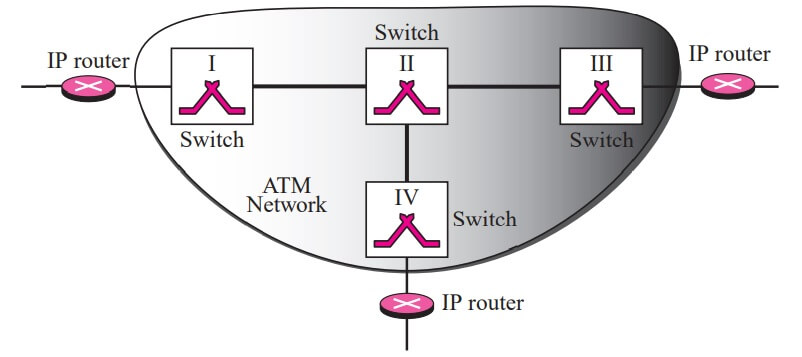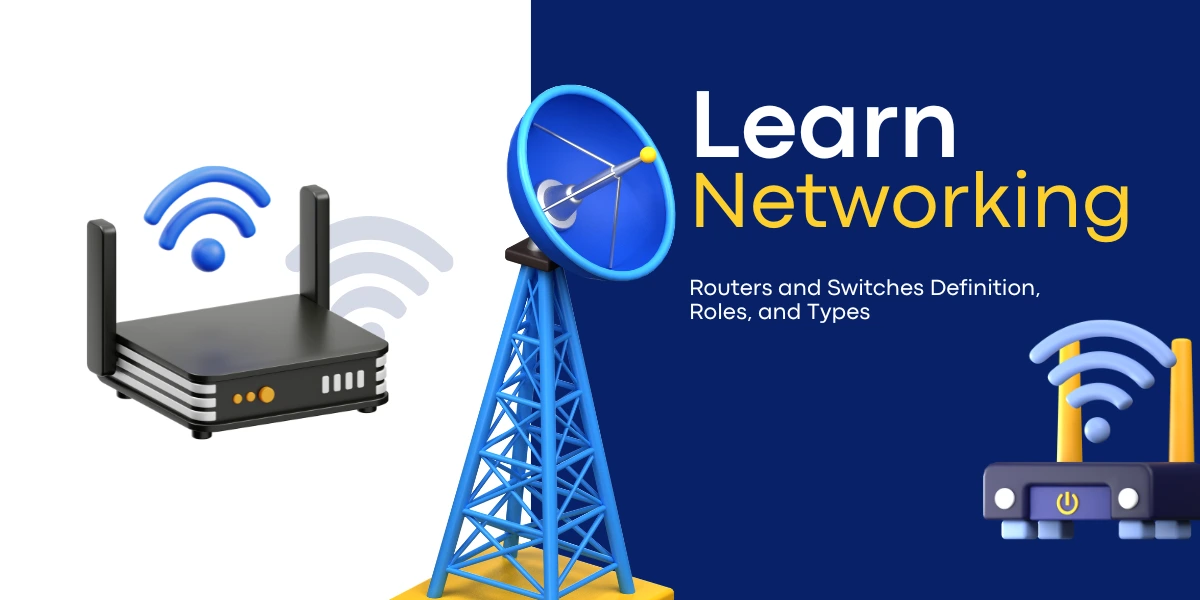We assumed that the underlying networks over which the IP datagrams are moving are either LANs or point-to-point WANs. In this section, we want to see how an IP datagram is moving through a switched WAN such as an ATM. We will see that there are similarities as well as differences. The IP packet is encapsulated in cells (not just one). An ATM network has its own definition for the physical address of a device. Binding between an IP address and a physical address is attained through a protocol called ATMARP.
Appendix D gives an algorithm for checksum calculation.
ATM WANs
ATM, a cell switched network, can be a highway for an IP datagram. Figure shows how an ATM network can be used in the Internet.

ALL Layer
we discussed different AAL layers and their applications. The only AAL used by the Internet is AAL5. It is sometimes called the simple and efficient adaptation layer (SEAL). AAL5 assumes that all cells created from one IP datagram belong to a single message. AAL5 therefore provides no addressing, sequencing, or other header information. Instead, only padding and a four-field trailer are added to the IP packet.
AAL5 accepts an IP packet of no more than 65,536 bytes and adds an 8-byte trailer as well as any padding required to ensure that the position of the trailer falls where the receiving equipment expects it (at the last 8 bytes of the last cell). Once the padding and trailer are in place, AAL5 passes the message in 48-byte segments to the ATM layer.
The AAL layer used by the IP protocol is AAL5.
[sc_fs_faq html=”true” headline=”h2″ img=”” question=”Why Use AAL5?” img_alt=”” css_class=””] A question that frequently comes up is why do we use AAL5. Why can’t we just encapsulate an IP packet in a cell? The answer is that it is more efficient to use AAL5. If an IP datagram is to be encapsulated in a cell, the data at the IP level must be 53 − 5 − 20 = 27 bytes because a minimum of 20 bytes is needed for the IP header and 5 bytes is needed for the ATM header. The efficiency is 27/53, or almost 51 percent. By letting an IP datagram span over several cells, we are dividing the IP overhead (20 bytes) among those cells and increasing efficiency. [/sc_fs_faq]
Routing the Cells
The ATM network creates a route between two routers. We call these routers entering point and exiting-point routers. The cells start from the entering-point router and end at the exiting-point router as shown in Figure.

Addresses : Routing the cells from one specific entering-point router to one specific exiting-point router requires three types of addressing: IP addresses, physical addresses, and virtual circuit identifiers.
IP Addresses : Each router connected to the ATM network has an IP address. Later we will see that the addresses may or may not have the same prefix. The IP address defines the router at the IP layer. It does not have anything to do with the ATM network.
Physical Addresses : Each router (or any other device) connected to the ATM network has also a physical address. The physical address is associated with the ATM network and does not have anything to do with the Internet. The ATM Forum defines 20-byte addresses for ATM networks. Each address must be unique in a network and is defined by the network administrator. The physical addresses in an ATM network play the same role as the MAC addresses in a LAN. The physical addresses are used during connection establishment.
Virtual Circuit Identifiers : The switches inside the ATM network route the cells based on the virtual circuit identifiers (VPIs and VCIs), The virtual circuit identifiers are used during data transfer.
Address Binding
An ATM network needs virtual circuit identifiers to route the cells. The IP datagram contains only source and destination IP addresses. Virtual circuit identifiers must be determined from the destination IP address. Figure shows how this is done. These are the steps:
The entering-point router receives an IP datagram. It uses the destination address and its routing table to find the IP address of the next router, the exiting-point router. This is exactly the same step followed when a datagram passes through a LAN.

The entering-point router uses the services of a protocol called ATMARP to find the physical address of the exiting-point router. ATMARP is similar to ARP.
The virtual circuit identifiers are bound to the physical addresses.
| Read More Topics |
| Introduction to internet protocol (IP) |
| Delivery and forwarding of IP packets |
| Three level addressing – subnetting |
| Packet switching at network layer |





